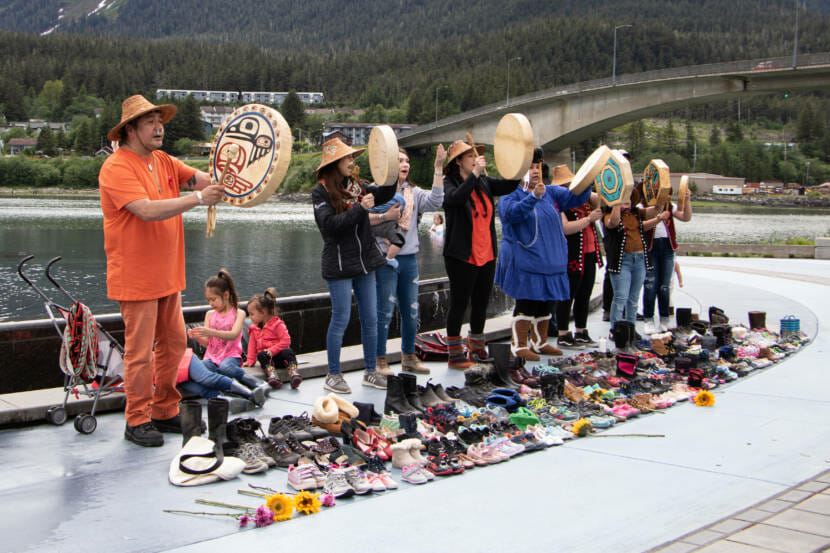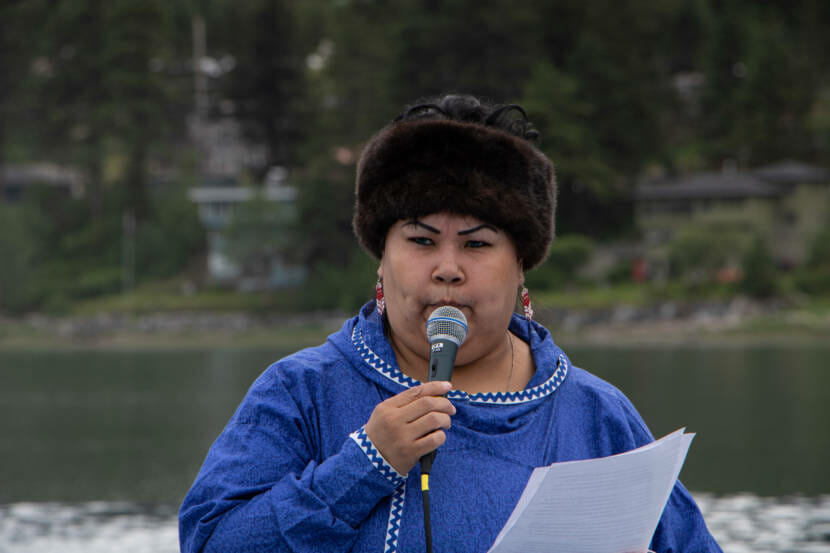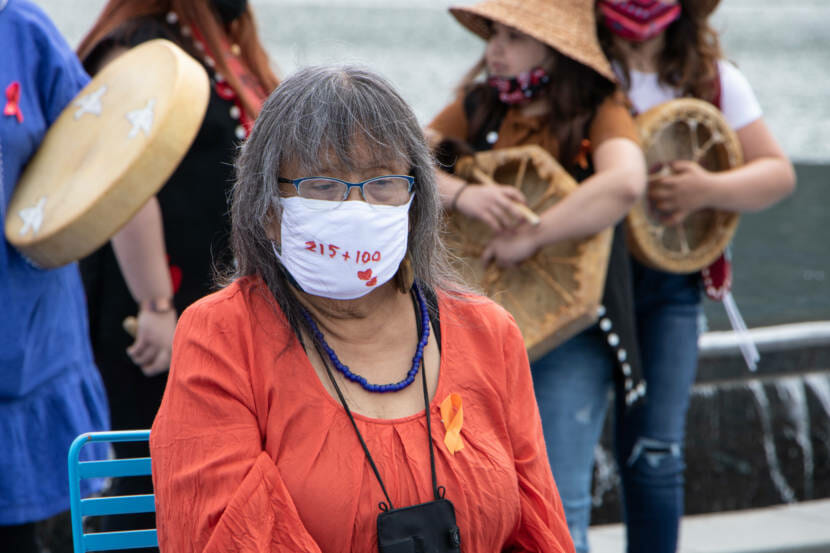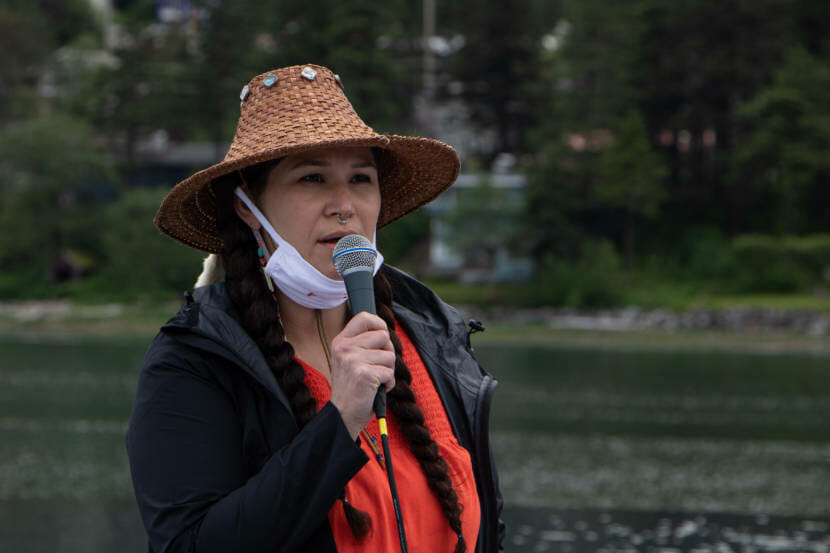
Last Saturday, the Alaska Native community and allies gathered at Overstreet Park in Juneau for a candlelight vigil honoring the 215 children found in unmarked graves at a residential school in Kamloops, British Columbia.
Indigenous people across Canada mourned when the news broke, but it wasn’t just a Canadian issue.

“The reason we sympathize with them is because the same thing that happened in Canada happened in Alaska. In Southeast,” Jennifer Brown said.
Brown is Tlingit from Sitka, and she organized the vigil held last Saturday. People burned sage and handed out orange ribbons and candles to everyone who showed up. Many came to the vigil dressed in orange, the color representing the missing children that never came home from residential and boarding schools, or red, the color representing Missing and Murdered Indigenous People.
Alaska Native children throughout the state were sent to boarding schools up until the 1980s with the goal of assimilating Native children. Some boarding schools were located right here in Southeast Alaska — Wrangell Institute in Wrangell and Sheldon Jackson College and Mt. Edgecumbe High School in Sitka.
In some cases, children were taken from their families and put into these schools, or into foster homes.
Tlingit Elder Leona Santiago of the Kaagwaantaan clan is one of those children. She was taken from her family at age two and not returned until she was almost 15.

“And this loss of all, the discovery of all these children hurts. Because it makes us think. Makes me think of my pain, my tears, that I had to suffer,” Santiago said.
Santiago shared her personal experience to give people an idea of what it was like for a child to be taken away from their parents and put into government custody. And she said it was worse for the generations before her who went to boarding schools.
“I can’t even imagine the pain that they felt, my grandparents. They were told not to speak the language. They were disciplined, they were beaten with a ruler on their hand. Their mouths were washed out with soap,” Santiago said.
Yolanda Fulmer is Tlingit of the T’akdeintaan clan. She was another speaker at the vigil, and she said the discovery of the children in Kamloops only confirmed what Indigenous people already knew.

“Kill the Indian. Save the man. These are all variants of the same sentiment that were passed throughout the U.S. and Canada. This was enacted through the genocide of boarding and residential schools,” Fulmer said.
The negative effects of boarding schools are not only felt by the children who attended, but by their families and communities as well.
“We see the residual damage, even into present day,” Fulmer said. “The painful stories we hold for our loved ones. The tears we try to catch. The heavy hearts and secrets we try to carry for them. They resonate throughout Indigenous country.”
People who attended boarding schools directly attribute alcohol and drug abuse, mental health struggles and trauma to the experience — as well as loss of culture, identity and language.
As a result of boarding schools, many people lost or stopped speaking their Indigenous language. Many Indigenous languages are now endangered because of it. But now that the history of boarding and residential schools is coming to light, people are starting to talk more about this past and begin the healing process.
Leona Santiago started the process in her twenties, and she says it’s not complete.
“So when we heal, we only don’t just heal ourselves. We heal what our ancestors had gone through,” Santiago said.
After the speeches, two songs were sung to honor and remember the children lost to residential schools.
On Monday June 21, there is a global memorial for the children found at the Kamloops Indian Residential School. And since more children have been found since the initial discovery in Kamloops, the memorial will honor them as well.
The memorial in Juneau will be held at 5pm at Overstreet Park.